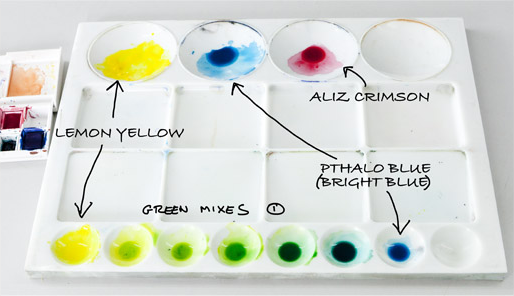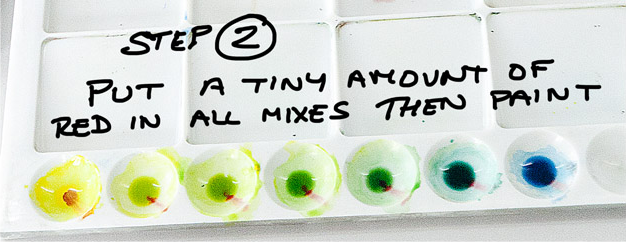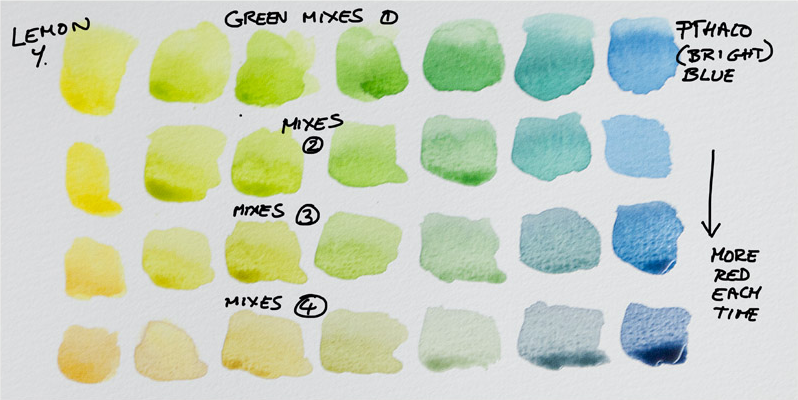Here’s a useful thing to have. I started painting a primula the other day in watercolours (still doing it) and I wanted to see how to mix the right greens. Now it’s a little known fact that humans can distinguish more variations of green than variations of any other colour. How can you mix all these variations?
Start with a cool yellow , and don’t use cadmium yellow for greens. Lemon yellow is good. Get a really bright transparent blue such as pthalo blue/bright blue/winsor blue and also a good transparent red – try alizarin crimson. With these three colours you can mix most greens.
Question: Why not use ready made greens?
Answer: You still have to mix colours with them and you don’t get the variety.



